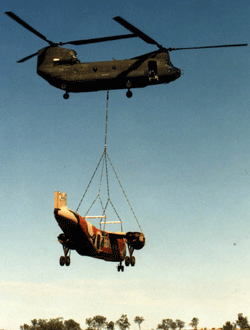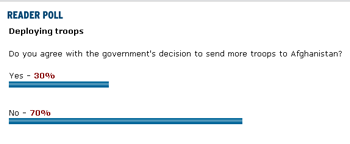Defence attacked
Have you any reason in the past few hours to modify your very angry reaction to how the Australian army is operating in Dili? Let’s get this straight. You’ve now talked to Angus Houston, you’ve talked to the minister and still the army on the ground cannot provide some protection for a single compound, which is one of the few compounds that hasn’t been looted and still has food for refugees? Are you saying that the Australian army is neglecting all those refugees? There are some 30,000 of them as you said earlier in the covenants – Don Bosco School and so on – are you saying they’re being neglected by the army? But you’re saying the terms of engagement for the army is inappropriate for the situation confronting them, is that correct?I’m surprised that the ADF hasn’t cottoned on to the fact that Tony Jones obviously knows more than all the Generals, Colonels, Defence advisors, political advisors and politicians combined. No longer do the military need all that expensive training; the years of attending course and seminars; the experience that each General accumulates as they undergo appointments overseas in succesive ranks from Lieutenant to General over maybe 30 years. Think of all the money they can save. Just ask Tony what to do. He can talk to the Tim the Priest and between them they can sort out terms of engagement for the soldiers. In todays Australian Patrick Walters descibes what actually happens on the ground.
AUSTRALIAN troops are using emergency powers to detain Timorese gang members in a campaign to stamp out widespread lawlessness in Dili.The move followed a meeting between Australia’s force commander, Brigadier Mick Slater, and East Timorese leaders. Thats what happens. The Army goes into these situations with a plan and adjust it as events develop; not just as a result of a priest castigating the Minister, or the General for not considering his own circumstances above all else but as a result of dicussions with people on the ground with the power to allocate power of arrest to the soldiers If Brigadier Slater responded to every compound wanting soldiers he would effectively split his forces at the crucial first day or two of the operation- a move not recommended in any tactics book I’ve read. As things settle then priorities change. By the way it is not as easy as some might think to shelve off a couple of diggers to guard one compound. A couple of diggers means one section of a platoon is now undermanned and consequently less deployable should events turn worse and that possibility did exist for a couple of days. A short section means a short platoon and noone wants to soldier seriously with one’s troops split. Back to Tony Jones.The Australian Defence Force has adopted the new tough approach after a weekend of violence by gangs of thugs that threatened to create a full-scale humanitarian crisis in the capital.
The move followed a meeting between Australia’s force commander, Brigadier Mick Slater, and East Timorese leaders. The policy allows Australian troops to hold criminal suspects for an unspecified period, with the possibility of laying charges under East Timorese law.
As reports suggest big improvements in the security situation in Dili, chief executive of World Vision, Tim Costello, gave a sharply contradictory view. Mr Costello has accused the Australian Army of neglect, saying he had thought it would have make it a priority to give protection to aid agencies tasked with feeding tens of thousand of refugees and that he was “absolutely shocked” this had not happened.Priest Tim will get his guards when the Army commander feels he has secured the situation to the point where the thousands of refugees have a life expectantcy sufficient to warrant feeding; not before.
 The Chinooks, commonly called ‘Chooks’ have had a chequered history in Australa with crashes and 12 squadron disbanding and ‘rebanding’ over the 33 years they have been in the ADF inventory.
In May 1989, the Defence Minister, Kim Beazley announced the withdrawal of the Tactical Transport Group Chinook fleet on cost grounds, and that Army Black Hawks would perform the essential roles of the Chinook.
This is a bit like saying a Land Rover can do the job of a Mac truck and the fact that this is a false hope didn’t take long to become apparent, even to the ALP. True, the Chinook is most probably the most expensive rotary wing aircraft to maintain in any countries inventory but it is also almost indispensable to the countries infrastructure. Its heavy lift capacity makes it ideal for civilian applications as well as defence deployment.
Besides ADF deployments, other tasks for the Chinooks have been lifting Wessex helicopters for the RAN, and wrecks of wartime Boston bombers from the jungles in Papua New Guinea. Also lifted was an extremely large statue of Australian aviation pioneer Sir Lawrence Hargrave onto Mt Keira at Wollongong, typical of many tasks undertaken for the civil community.
The first time I flew in one was in Vietnam. The US Chook picked up us 20 odd soldiers then flew over and picked up a bulldozer. I was sitting over the hatch that had a round beam from which hung the dozer. It looked all too lightweight to me but off we flew with the dozer oscilating and me hyperventilating.
Great piece of kit and it’s good to see it is supporting the new soldiers as they battle the new terrorists.
UPDATE:
Too date, 61% of Age readers who have participated in a poll on sending troops to Afghanistan have voted for the continuation of the Taliban regime with all it’s brutality.
The Chinooks, commonly called ‘Chooks’ have had a chequered history in Australa with crashes and 12 squadron disbanding and ‘rebanding’ over the 33 years they have been in the ADF inventory.
In May 1989, the Defence Minister, Kim Beazley announced the withdrawal of the Tactical Transport Group Chinook fleet on cost grounds, and that Army Black Hawks would perform the essential roles of the Chinook.
This is a bit like saying a Land Rover can do the job of a Mac truck and the fact that this is a false hope didn’t take long to become apparent, even to the ALP. True, the Chinook is most probably the most expensive rotary wing aircraft to maintain in any countries inventory but it is also almost indispensable to the countries infrastructure. Its heavy lift capacity makes it ideal for civilian applications as well as defence deployment.
Besides ADF deployments, other tasks for the Chinooks have been lifting Wessex helicopters for the RAN, and wrecks of wartime Boston bombers from the jungles in Papua New Guinea. Also lifted was an extremely large statue of Australian aviation pioneer Sir Lawrence Hargrave onto Mt Keira at Wollongong, typical of many tasks undertaken for the civil community.
The first time I flew in one was in Vietnam. The US Chook picked up us 20 odd soldiers then flew over and picked up a bulldozer. I was sitting over the hatch that had a round beam from which hung the dozer. It looked all too lightweight to me but off we flew with the dozer oscilating and me hyperventilating.
Great piece of kit and it’s good to see it is supporting the new soldiers as they battle the new terrorists.
UPDATE:
Too date, 61% of Age readers who have participated in a poll on sending troops to Afghanistan have voted for the continuation of the Taliban regime with all it’s brutality.
 It could only happen at the Age.
It could only happen at the Age.
 LANGLEY Air Force BASE, Va. –
LANGLEY Air Force BASE, Va. –